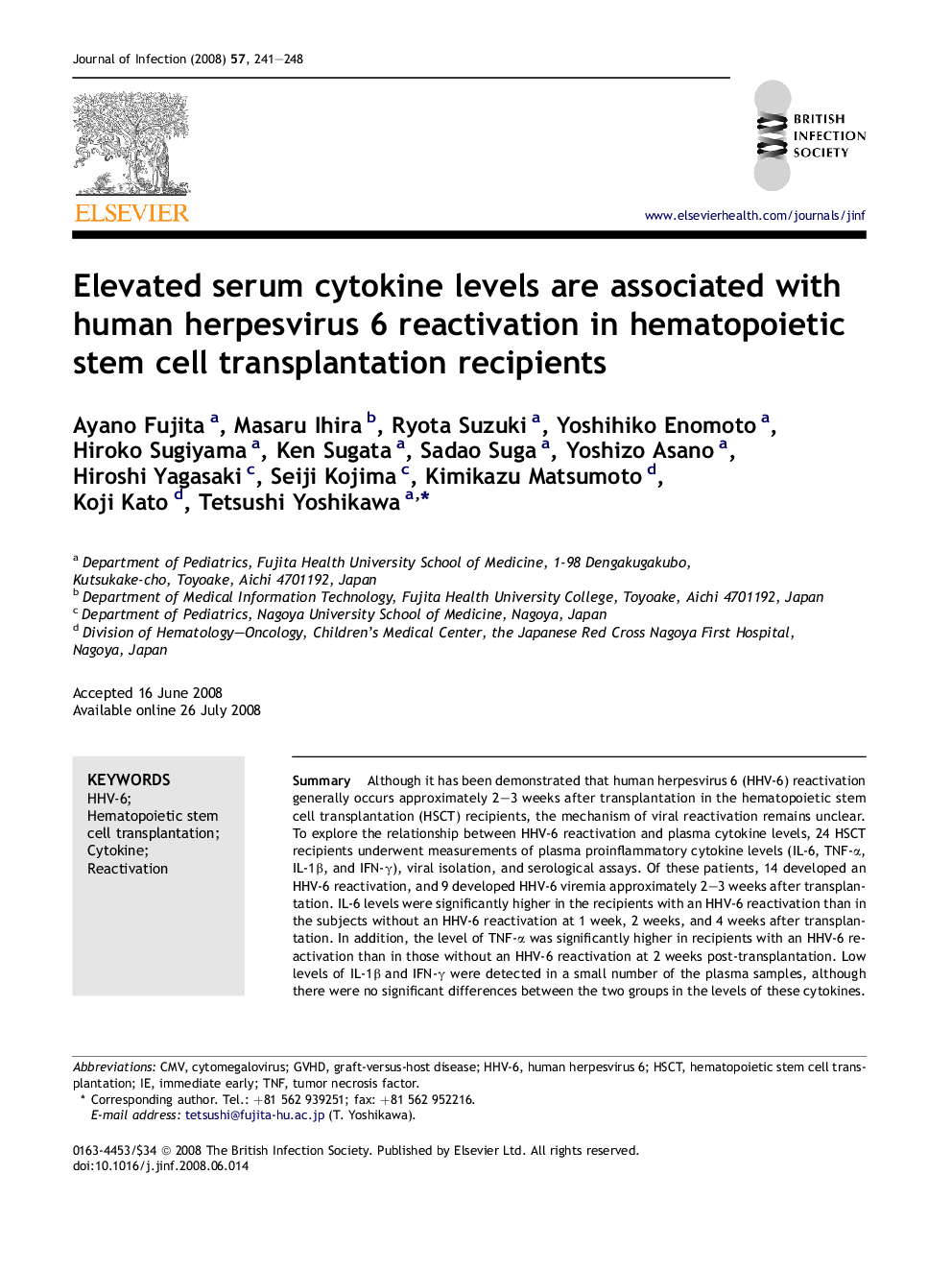| Article ID | Journal | Published Year | Pages | File Type |
|---|---|---|---|---|
| 3375736 | Journal of Infection | 2008 | 8 Pages |
SummaryAlthough it has been demonstrated that human herpesvirus 6 (HHV-6) reactivation generally occurs approximately 2–3 weeks after transplantation in the hematopoietic stem cell transplantation (HSCT) recipients, the mechanism of viral reactivation remains unclear. To explore the relationship between HHV-6 reactivation and plasma cytokine levels, 24 HSCT recipients underwent measurements of plasma proinflammatory cytokine levels (IL-6, TNF-α, IL-1β, and IFN-γ), viral isolation, and serological assays. Of these patients, 14 developed an HHV-6 reactivation, and 9 developed HHV-6 viremia approximately 2–3 weeks after transplantation. IL-6 levels were significantly higher in the recipients with an HHV-6 reactivation than in the subjects without an HHV-6 reactivation at 1 week, 2 weeks, and 4 weeks after transplantation. In addition, the level of TNF-α was significantly higher in recipients with an HHV-6 reactivation than in those without an HHV-6 reactivation at 2 weeks post-transplantation. Low levels of IL-1β and IFN-γ were detected in a small number of the plasma samples, although there were no significant differences between the two groups in the levels of these cytokines. These results imply that proinflammatory cytokines, in particular IL-6 and TNF-α, play a role in the pathogenesis of HHV-6 reactivation after HSCT.
